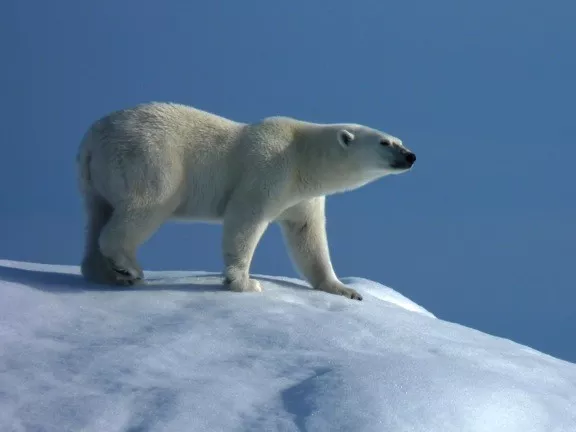
Probing the pressures on Canada’s Arctic
The key social, economic and ecological challenges affecting Canada’s North were spotlighted last week at the University of Toronto Mississauga’s special event, Canada’s Changing Arctic: Walking on Thin Ice.
Hosted by UTM’s Geography department at the Instructional Centre on Sept. 21 and 22, the event featured experts from various disciplines from across Canada sharing their insights on climate change, natural resource exploitation and sovereignty matters in the Arctic. A free event open to the U of T and broader community, it revealed the main pressures on Canada’s Arctic through compelling talks, a panel discussion and student research presentations.
University of Waterloo professor Robert W. Park started things off with a lecture on the remaining mysteries surrounding the famed 1845 Arctic expedition of British sea captain Sir John Franklin, which became icebound and led to the deaths of all 129 people aboard. The archaeological anthropologist shared how Inuit testimony and recent archaeological investigations have shaped our understanding of these explorers. He currently helps the Nunavut government with the land-based component of the archeological investigation of the expedition.
At the symposium on day two, Indigenous advocate Shylah Elliott discussed the food insecurity crisis in Nunavut, which affects 69% of Inuit households, a rate eight times higher than the national average. A health policy analyst with Nunavut Tunngavik Inc., which ensures the Nunavut Land Claims Agreement is implemented by Canada’s government, she described how colonialism, environmental change, poor access to traditional or “country” food and exorbitantly priced market food all contribute to food insecurity, leading to adverse effects on people’s health and the destabilization of communities.
“Food insecurity threatens our cultural integrity, our overall social stability, and has a devastating effect on our economic development,” she said. “Healthy people simply perform better in life. As Nunavut’s economy develops, so, too, must the health of its people.”
In 2012, a Nunavut government initiative to reduce poverty led to the formation of the Nunavut Food Security Coalition, a collaboration involving government agencies, Indigenous associations, food companies and other community organizations. Elliott, who serves on the coalition’s secretariat, described the coalition’s efforts to promote local food production, help residents access country food, make store-bought food more affordable and influence government policy. She emphasized the need for both ongoing collective local action and broader government intervention.
University of Alberta professor emeritus John England shared the results of his five decades of research on the changing landscape of the Canadian Arctic Archipelago. A Natural Sciences and Engineering Research Council of Canada Northern Research Chair, he discussed the broader implications of his findings about the unprecedented magnitude and rate of environmental change in the Arctic. Another presentation by Arctic sovereignty expert and Trent University adjunct professor Shelagh Grant highlighted the historical factors that have threatened Arctic sovereignty. She outlined how shifts in world power, increased competition for Arctic resources, technological advances and abrupt changes in sea ice can make Arctic coastal countries vulnerable to losing their sovereign rights.
The final presentation was by Environment Canada emeritus research scientist Ian Stirling, who covered how climate change is impacting the survival of polar bears. He explained how the distribution and availability of sea ice, which polar bears rely on to hunt marine mammals, is undergoing major change due to climate warming. This is resulting in the bears going hungry for longer periods of time – which affects their reproductive activity and the outcomes of their offspring – and more instances of bears entering human territory to search for food.
“The survivorship of younger bears and litter sizes and reproductive rates appear to be declining,” Stirling says. “With what’s going on with the sea ice melting…we’re going to have a greater number of problem bears, and we’re going to have a lot of problems for humans with respect to these bears.”
The symposium also featured a display of Arctic-related research projects by UTM graduate students. Their work covered areas such as sustainability in the Nunavut tourism industry, early Inuit and European explorers’ interactions with sea ice, and the effects of climate change on lake ice.
